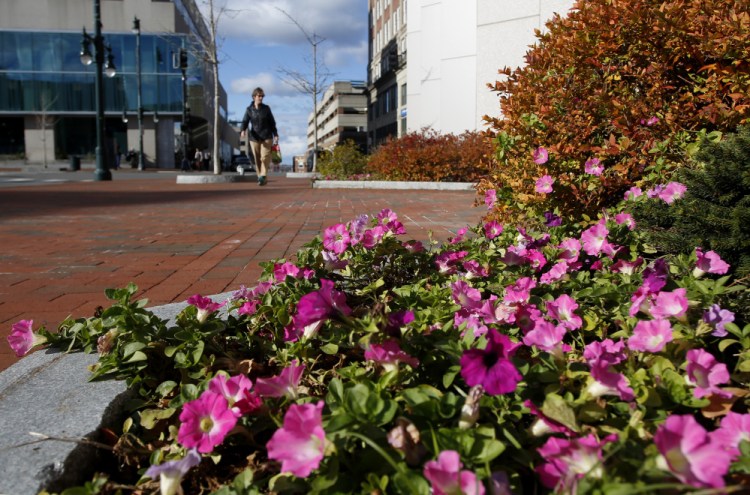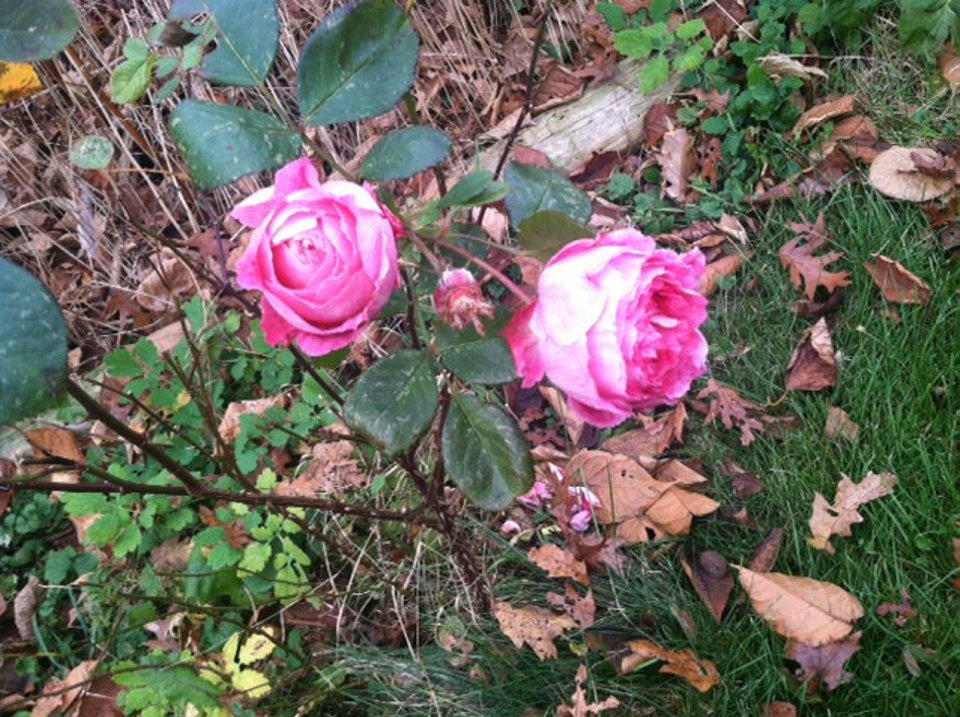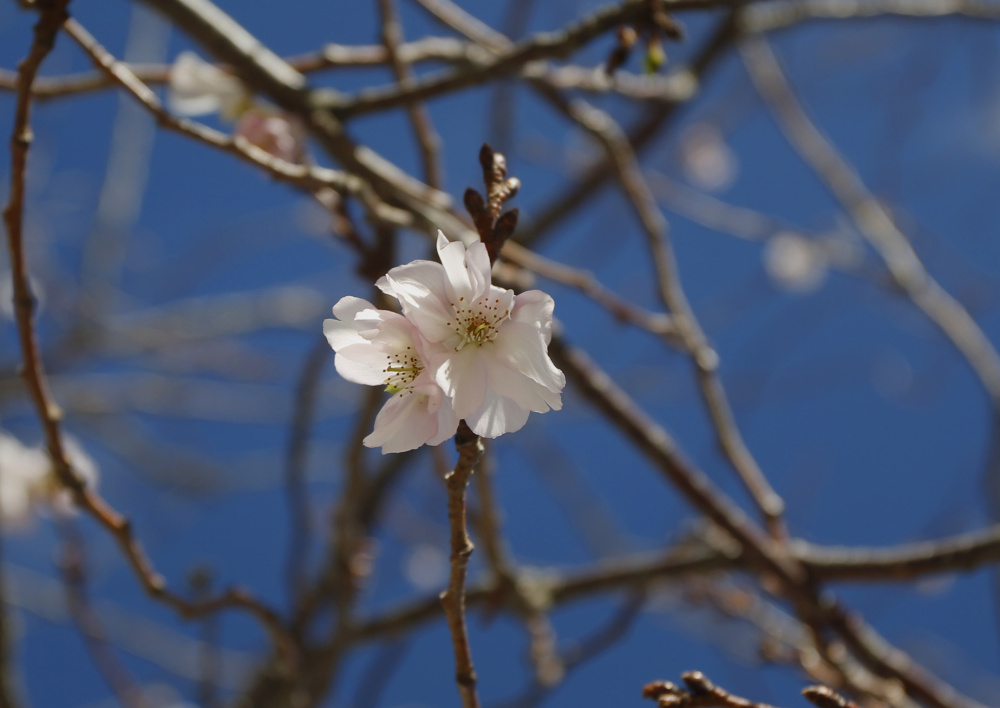This is the time of year that Jeff Tarling, Portland’s city arborist, is anticipating the raising of the city Christmas tree in Monument Square. But this year, as he drives around town, he’s noticing signs of spring.
After several days of temperatures that hit the 60s, the Sargent cherry tree in front of City Hall started blooming again. And there are other cherry and crabapple trees in the West End and Munjoy Hill that are doing the same.
After some cold nights in September and October told the trees it was time to “harden up” and go dormant for the winter, the recent warm-up tricked them into thinking it’s May again.
“The buds release and open up,” Tarling said. “Notice it’s not the whole tree blooming out, but one (blossom) here and there.”
Above-average temperatures for the first half of November are to blame. Dandelions are springing up, roses are blooming and forsythia are sending out flowers in sunny, protected locations.
“I have been hearing about that from a few people,” said James Brown, meteorologist at the National Weather Service in Gray.
So far this November is breaking the record book – which was started in 1940 at what is now the Portland International Jetport – for warm temperatures. The average temperature was 48.5 degrees from Nov. 1 to 14, well above average for the same time period in past years. The previous high temp for the first two weeks of November was 44.7 degrees in 2011, followed by 43.8 degrees in 2006 and 43 degrees in 2009 and 1975.
And with the forecast calling for above-average temperatures at least through Thanksgiving, it is possible this month could wind up as the warmest November in the Portland area since 1940, Brown said.
“We are running pretty high, but we still have 16 days to go,” he said.
Brown said the warm weather is because of a persistent weather pattern of warm Pacific air traveling across the country.
“There is a trough in the West and a ridge in the East,” said Brown.
October temperatures were normal, Brown said.
The ill-timed bloom won’t kill the tree when winter finally arrives, Tarling said, but it could mean there will be less color next spring because the blooms showing off now won’t bloom again in May.
Tarling is concerned, however, about the possibility of another warm-up later in the year followed by a sudden drop in temperature to the low teens. In that case, the dramatic change can result in a lot of winter die-back and spring damage.
“It seems to affect most the non-native and recently planted trees,” Tarling said. “You’ll notice around town some of the Bradford pears and Callaway pears that we have still are pretty much in full leaf, and those are some we always worry about as far as having storm damage and ice damage.”
Rob Moody of Moody’s Nursery and Garden Center in Saco said the roses are still in bloom at his garden center and he has noticed blossoms on fruit trees, forsythia and rhododendron bushes.
Moody told gardeners not to worry.
“The trees will do fine. They are programmed to handle that as part of their coping skills. The gardener probably has less coping skills than the plants,” said Moody.
Moody said gardeners do have to worry about the dry weather, which has stressed trees and shrubs.
The specialists recommend watering and fertilizing, paying extra attention to new landscape plantings, especially if they are conifers, to keep the root system healthy.
“It seems funny to water plants this time of year,” said Tarling, “but there may be some newly planted landscape plants around your home that would benefit from a good soaking if it doesn’t rain.”
Some apple orchard operators in southern Maine said they have not noticed blooms in their fruit trees, which just produced one of the best apple crops in years.
Greg Sweetser of Sweetser’s Apple Barrel in Cumberland said even if a few blossoms did appear, it wouldn’t affect next year’s crop. It is next spring’s weather that can make or break the crop, he said. Next year’s crop is expected to be smaller, which is typical after a good year.
Bill Spiller of Spiller Farm in Wells said his apple trees lost their leaves early this year, due to the heavy crop, but he hasn’t noticed any errant blossoms.
He said the warm, dry fall has been a boon at his farm.
“It has been a great fall for working the land because it has not been too wet,” Spiller said.
Send questions/comments to the editors.







Success. Please wait for the page to reload. If the page does not reload within 5 seconds, please refresh the page.
Enter your email and password to access comments.
Hi, to comment on stories you must . This profile is in addition to your subscription and website login.
Already have a commenting profile? .
Invalid username/password.
Please check your email to confirm and complete your registration.
Only subscribers are eligible to post comments. Please subscribe or login first for digital access. Here’s why.
Use the form below to reset your password. When you've submitted your account email, we will send an email with a reset code.